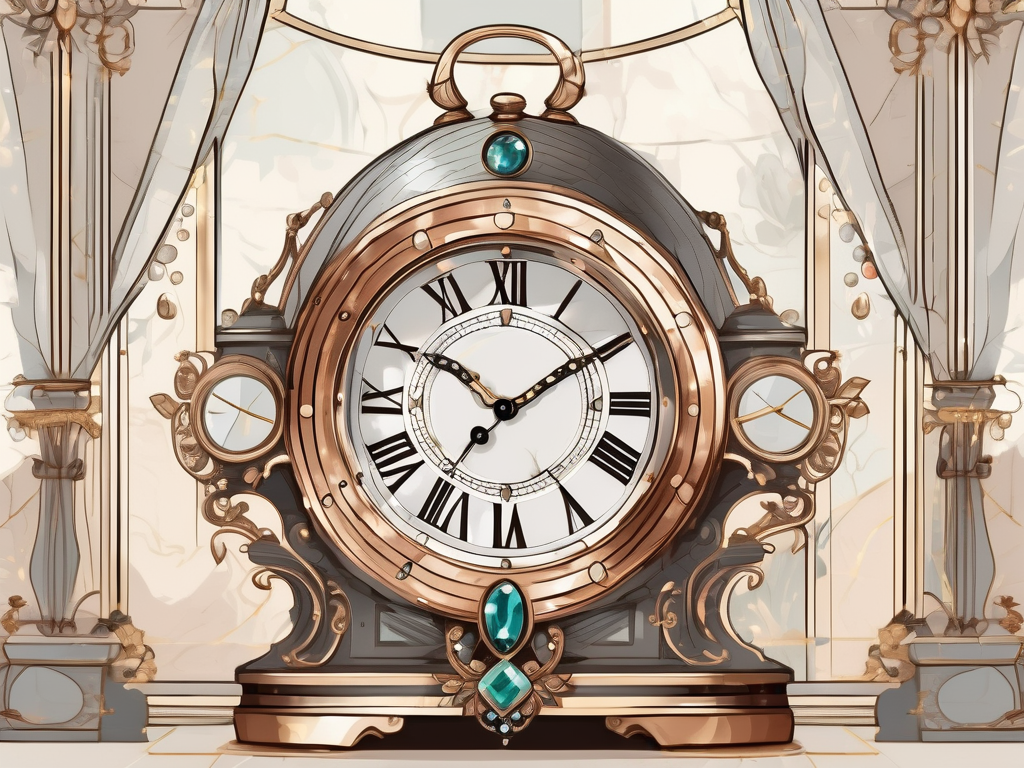When it comes to home interiors, one cannot resist making them touchy: more expressions with the aesthetics and more stories. Now of all these graceful inclusions, the revered spot is held by antique clocks, blending functionality with an unparalleled historical draw. As we dig deeper into the world of grandfather clocks, mantel, and wall clocks, their origin tales unveil. How a beautiful creation of modern times changes the space with a touch of timeless grace is learned by the reader.
Grandfather Clocks: Majestic Time
Grandfather clocks, also known as long-case clocks, were first developed in the UK towards the end of the 17th century. The storied frames that held pendulums and cases, the intricate performances of these clocks, really spoke to the art and high technology of their age. Lending possibly an emotional resonance to the chime of a grandfather clock, any room is given a sense of lineage and continuity. Today, a well-placed grandfather clock becomes the center of attraction in living rooms, hallways, or even studies, bringing a touch of royalty to any modern decor.
Mantel Clocks: Elegance on Display
The mantel clocks grew in popularity from 18th-century France, which ornamented the fireplace mantels of the rich. This is usually of a smaller size compared to their floor-standing cousins, but no less grand with ornate design and intricate detailing. It is with versatility that the mantel clock will charm its way into complementing the opulence of traditional decor or the simplicity of modern styles in any bedroom, dining room, or kitchen.
Wall Clocks: A Glimpse into History
Wall clocks appeared in the 16th century when they started decorating the walls of European nobility. These clocks, with great ease, were set in cases carved in a dashing manner or painted with picturesque scenes; they united the practical goal of time measurement and with a touch of art. An antique wall clock can break the monotony of a plain wall designed with high intensity of character in contemporary design. This big, antique wall clock perfectly travels with modern furnishings through time, providing a quiet home office with a touch of old-world charm.
Integrating Antique Clocks into Modern Decor
The integration of any of these clocks into contemporary homes requires a keen eye for balance and aesthetics. The key is to let the clock stand out without overwhelming the space. For instance, a grandfather clock in a minimalist room can draw the eye and center the design, while a mantel clock can add warmth to a modern fireplace setting. Each clock type brings its own narrative and charm, enriching the home’s environment and providing a focal point that sparks conversation and admiration.
The Importance of Trusted Antique Dealers
One of the main things in buying antiques is to purchase through reputable dealers, for example Dutch Time Pieces. Such dealers will not only give an authenticity certificate to guarantee its provenance but also make sure the working condition of the clock or restorability. An antique clock is not just a purchase; it is an investment in art and history. It’s therefore incumbent on one to work with knowledgeable dealers who can divulge a detailed history and proper maintenance advice.
Conclusion
Antique clocks say much more than just telling time. They symbolize history, taste, and craftsmanship. Be it the imposing lines of a grandfather clock, the delicate appeal of a mantel clock, or the flair of a wall clock for artistry, such timepieces represent a very special blend of functionality with beauty that could decorate any home. Choosing the right timekeeper and purchasing it from the right dealer shall give a space that will resonate with so much elegance reminiscent of bygone eras but which embaces timeless design.



